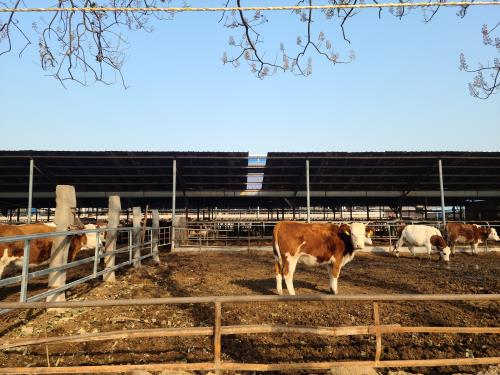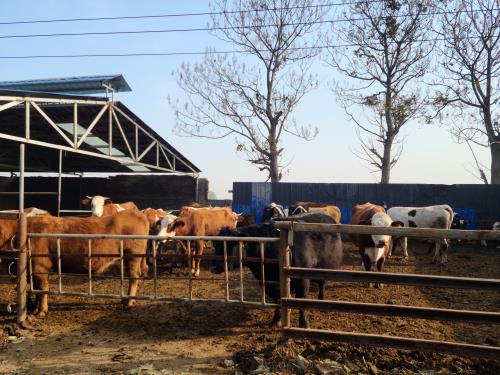When we talk about farming, one word always comes to the surface: productivity. Farmers everywhere are asking the same question—how can I get more output from the land, animals, and resources I already have? Farm productivity is not just about producing more food; it’s about doing it in a sustainable, 費用 対 効果, and efficient way. Let’s take a closer look at the main factors that shape productivity on farms and what can realistically be done to improve it.

The Role of Technology in Boosting Productivity
Technology is one of the biggest drivers of modern farm productivity. From tractors to drones, machines have taken over jobs that once required hours of manual labor. The most transformative change in recent years has been the rise of precision farming. Tools like GPS-guided tractors, soil sensors, and smart irrigation systems help farmers apply water, fertilizer, and pesticides only where needed.
This kind of precision not only saves money but also reduces waste and environmental damage. For livestock farming, technology like veterinary ultrasound machines plays a huge role. With ultrasound, farmers can detect pregnancies early, monitor animal health, and plan breeding schedules more efficiently. These tools mean less guesswork and more informed decisions, which directly translate into higher productivity.
Soil Health and Crop Management
Soil is the foundation of crop farming. Poor soil health limits crop yield, no matter how advanced the equipment is. Farmers who focus on improving soil fertility often see long-term gains in productivity. Methods like crop rotation, adding organic matter, and minimizing chemical overuse can bring soil back to life.
Healthy soil holds more water, provides better nutrition to plants, and reduces the need for costly inputs. It also makes crops more resistant to diseases and pests. In this way, improving soil quality is not just a one-season fix but a strategy that pays off year after year. Farmers who ignore soil health often find themselves stuck in a cycle of rising costs and falling yields.
Labor and Knowledge as Productivity Drivers
While machines play a role, human knowledge is equally important. Skilled farm workers and educated farmers make better decisions about planting, feeding, and animal care. Productivity often rises when farmers invest in training and education. Simple knowledge, like the right time to plant or the best feed mix for livestock, can prevent losses and improve output.
Farm labor shortages are a global issue, so many farmers now rely on migrant workers or seasonal employees. In such cases, training becomes even more crucial. Farms that train their workers to use technology properly and follow best practices usually see a clear productivity advantage.

Farm Size and Resource Management
Larger farms tend to have higher productivity per unit because they can spread costs over a bigger area. 例えば, a large farm can afford a modern irrigation system or a high-end ultrasound scanner for cattle, while a small farmer might not justify the expense. しかし, size is not everything. Small farms can still be highly productive if they manage resources wisely and use smart techniques.
例えば, small farms can focus on high-value crops, intensive livestock systems, or niche products like organic produce. In fact, small farms often outperform big ones in terms of efficiency when they have strong management and good access to markets.
Market Access and Farm Economics
Productivity is not just about how much a farm produces but also about how efficiently it sells what it produces. Farmers who can access reliable markets are more motivated to increase production because they know they will get a fair return. Lack of market access, 一方, discourages investment and innovation.
Economics also plays a role. If input costs like fertilizer, seed, or fuel are too high, even a productive farm might struggle to stay profitable. For this reason, policies and infrastructure that support farmers—such as good roads, storage facilities, and fair pricing—can directly impact farm productivity.
The Impact of Livestock Management
Livestock productivity is a major part of farm output. For animals, productivity means not just quantity but also quality. Healthy cows give more milk, healthy hens lay more eggs, and well-fed pigs reach market weight faster. The use of veterinary technology, balanced diets, and proper housing conditions can raise productivity significantly.
例えば, using ultrasound machines on farms allows farmers to detect reproductive problems early and manage breeding schedules. This reduces downtime between pregnancies and ensures more consistent livestock output. In poultry farming, careful management of lighting, feed, and housing can double egg production. Each of these improvements adds up to a noticeable difference in overall farm productivity.
Environmental Sustainability and Long-Term Gains
Farm productivity is often measured in short-term output, but long-term sustainability is equally important. Overusing water, chemicals, or land resources might give higher yields today but reduce productivity in the future. Sustainable practices like conservation tillage, drip irrigation, and renewable energy not only protect the environment but also maintain farm productivity over time.
Climate change is another challenge. Extreme weather can wipe out crops or stress animals, lowering farm output. Farmers who adapt with climate-smart practices—such as drought-resistant crops or shaded livestock housing—are more likely to sustain productivity.
A Clearer Comparison
To make the main points easier to digest, here is a table comparing some of the biggest factors that influence farm productivity:
| Factor | Positive Impact on Productivity | Challenges if Ignored |
|---|---|---|
| Technology | Reduces labor, improves accuracy, boosts efficiency | Higher costs, more errors, wasted resources |
| Soil Health | Better yields, resilient crops, reduced input costs | Poor fertility, crop diseases, declining output |
| Labor and Knowledge | Efficient practices, better care for crops/animals | Mismanagement, higher losses, lower quality |
| Farm Size & Resources | Economies of scale, access to modern equipment | Resource waste, higher costs per unit |
| Market Access | Fair prices, motivation to produce more | Surpluses wasted, low farmer income |
| Livestock Management | Consistent output, healthier animals | Low fertility, higher mortality, reduced yield |
| Sustainability | Stable long-term productivity, lower risks | Resource depletion, climate vulnerability |
結論
Farm productivity is not a single switch that farmers can flip on or off. It is the result of many interconnected factors, from soil health to livestock care, from technology use to market conditions. The good news is that farmers have more tools and knowledge today than ever before. By adopting smarter practices, embracing sustainable methods, and making use of modern veterinary and crop technologies, farms can achieve higher productivity without sacrificing long-term health.